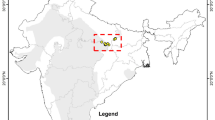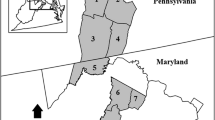Abstract
Wildlife is a multi-million dollar industry in South Africa ranging from intensively farmed animals on small properties to free-roaming animals in large functional ecosystems. Specific concerns surrounding the conservation value of the intensively managed wildlife have been raised. Increasingly it is recognised that genetics must be considered when developing conservation policy and management practices. Minimal genetic data are available to assist with decisions within the industry. Microsatellite markers have been developed for some species and are currently used for individual identification, parentage assessment and to inform translocation decisions. However, validation for standardized application in wildlife management has not been completed. Common species for which conservation management decisions have to be made include: Cape buffalo (Syncerus caffer), blue wildebeest (Connochaetes taurinus taurinus), common impala (Aepyceros melampus) and sable antelope (Hippotragus niger). Using existing microsatellite markers for domestic and wild species, we have developed multiplex panels for use in these species. We discriminated between 751 buffalo (four pairs were not distinguishable), 1307 blue wildebeest (three pairs were not distinguishable), 580 impala and 493 sable antelope. We determined parentage in four case studies using a combination of microsatellite and demographic data. We also tested microsatellite markers on roan antelope (Hippotragus equinus), gemsbok (Oryx gazella) and eland (Tragelaphus oryx) and report preliminary data. Further research to improve this validation includes: extensive sampling from more diverse areas, targeted or full genome sequencing to identify additional microsatellite loci, development of sampling kits and training of veterinarians, as well as expansion of the species tested.

Similar content being viewed by others
References
ABSA (2016) ABSA agricultural outlook 2016. http://agriconnect.co.za/agricultural-outlook/absa-agricultural-outlook/agricultural-outlook-digital-edition/book/114.html?page=96&tmpl=component. Accessed 08 Jan 2016
Bernatchez L, Duchesne P (2000) Individual-based genotype analysis in studies of parentage and population assignment: how many loci, how many alleles? Can J Fish Aquat Sci 57:1–12
Brownstein MJ, Carpten JD, Smith JR (1996) Modulation of non-templated nucleotide addition by Taq DNA polymerase: primer modifications that facilitate genotyping. Biotechinques 20:1004–1008
Goudet J (1995) A computer program to calculate F-statistics. J Hered 86:486
Grobler JP, Van der Bank FH (1994) Allozyme variation in South African impala populations under different management regimes. S Afr J Wildl Res 24:89–94
Grzybowski G, Prusak B, Romaniuk B (2006) A novel variant of the amelogenin gene (AMEL-X) in cattle and its implications for sex determination. Anim Sci Pap 24:111–118
Harper CK, Vermeulen GJ, Clarke AB, de Wet JI, Guthrie AJ (2013) Extraction of nuclear DNA from rhinoceros horn and characterization of DNA profiling systems for white (Ceratotherium simum) and black (Diceros bicornis) rhinoceros. Forensic Sci Int Genet 7:428–433
Harris TR, Caillaud D, Chapman CA, Vigilant L (2009) Neither genetic nor observational data alone are sufficient for understanding sex-biased dispersal in a social-group-living species. Mol Ecol 18:1777–1790
Harrison HB, Saenz-Agudelo P, Planes S, Jones GP, Berumen ML (2013) Relative accuracy of three common methods of parentage analysis in natural populations. Mol Ecol 22:1158–1170
Heaton MP, Harhay GP, Bennett GL, Stone RT, Grosse WM, Casas E, Keele JW, Smith TPL, Chitko-McKown CG, Laegreid WW (2002) Selection and use of SNP markers for animal identification and paternity analysis in U.S. beef cattle. Mamm Genome 13:272–281
Heaton MP, Leymaster KA, Kalbfleisch TS, Kijas JW, Clarke SM, McEwan J, Maddox JF, Basnayake V, Petrik DT, Simpson B, Smith TPL, Chitko-McKown CG, and the International Sheep Genomics Consortium (2014) SNPs for parentage testing and traceability in globally diverse breeds of sheep. PLoS One 9:e94851
Hoban S, Arntzen JW, Bertorelle G, Bryja J, Fernandes M, Frith K, Gaggiotti O, Galbusera P, Godoy JA, Hauffe HC, Rus Hoelzel A, Nichols RA, Pérez-Espona S, Primmer C, Russo IR, Segelbacher G, Siegismund HR, Sihvonen M, Sjögren-Gulve P, Vernesi C, Vilà C, Bruford MW (2013a) Conservation Genetic Resources for Effective Species Survival (ConGRESS): bridging the divide between conservation research and practice. J Nat Conserv 21:433–437
Hoban S, Hauffe H, Pérez-Espona S, Arntzen J, Bertorelle G, Bryja J, Frith K, Gaggiotti O, Galbusera P, Godoy JA, Hoelzel AR, Nichols R, Primmer C, Russo IR, Segelbacher G, Siegismund H, Sihvonen M, Vernesi C, Vilà C, Bruford M (2013b) Bringing genetic diversity to the forefront of conservation policy and management. Conserv Genet Resour 5:593–598
Huebinger RM, de Maar TWJ, Woodruff LH, Pomp D, Louis EE (2006) Characterization of nine microsatellite loci in impala (Aepyceros melampus). Mol Ecol Notes 6:1152–1153
IUCN/SSC Antelope Specialist Group (2015) IUCN SSC ASG position statement on the intentional genetic manipulation of antelopes. http://www.iucn.org/about/work/programmes/species/who_we_are/ssc_specialist_groups_and_red_list_authorities_directory/mammals/asghome/?21393/position-statement-on-the-intentional-genetic-manipulation-of-antelopes. Accessed 15 Oct 2015
Jones AG, Small CM, Paczolt KA, Ratterman NL (2010) A practical guide to methods of parentage analysis. Mol Ecol Resour 10:6–30
Kalinowski ST, Taper ML, Marshall TC (2007) Revising how the computer program CERVUS accommodates genotyping error increases success in paternity assignment. Mol Ecol 16:1099–1106
Lindsay A, Belant J (2008) A simple and improved PCR-based technique for white-tailed deer (Odocoileus virginianus) sex identification. Conserv Genet 9:443–447
Lindsey P, Romanach SS, Davies-Mostert HT (2009) The importance of conservancies for enhancing the value of game ranch land for large mammal conservation in southern Africa. J Zool 277:99–105
Luxmoore R (1985) Game farming in South Africa as a force in conservation. Oryx 19:225–231
Mayer C (2006) Phobos, 3.3.11, 2006–2010. http://www.rub.de/spezzoo/cm/cm_phobos.htm
Miller SM, Harper CK, Bloomer P, Hofmeyr J, Funston PJ (2014) Evaluation of microsatellite markers for populations studies and forensic identification of African lions (Panthera leo). J Hered 105:762–772. doi:10.1093/jhered/esu054
Narum SR (2006) Beyond Bonferroni: less conservative analyses for conservation genetics. Conserv Genet 7:783–787
Ogden R, Dawnay N, McEwing R (2008) Development of STR profiling systems for individual identification in wildlife: a case study of the Eurasian badger, Meles meles. Forensic Sci Int Genet Suppl Ser 1:612–613
Ogden R, Dawnay N, McEwing R (2009) Wildlife DNA forensics—bridging the gap between conservation genetics and law enforcement. Endanger Species Res 9:179–195
Peakall R, Smouse PE (2006) GENALEX 6: genetic analysis in Excel. Population genetic software for teaching and research. Mol Ecol Notes 6:288–295
Pemberton JM, Slate J, Bancroft DR, Barrett JA (1995) Nonamplifying alleles at microsatellite loci: a caution for parentage and population studies. Mol Ecol 4:249–252
Rice WR (1989) Analyzing tables of statistical tests. Evolution 43:223–225
Røed KH, Ernest E, Midthjell L, Msoffe P (2011) Identification and characterization of 17 microsatellite loci in the blue wildebeest, Connochaetes taurinus. Conserv Genet Resour 3:181–183
Rousset F (2008) GENEPOP’007: a complete re-implementation of the GENEPOP software for Windows and Linux. Mol Ecol Resour 8:103–106
SA Hunters and Game Conservation Association (2015) Hunting body calls for regulation of intensive commercial game breeding practices. http://www.sahunters.co.za/index.php/item/184-hunting-body-calls-for-regulation-of-intensive-commercial-game-breeding-practices. Accessed 15 Oct 2015
Selkoe K, Toonen RJ (2006) Microsatellites for ecologists: a practical guide to using and evaluating microsatellite markers. Ecol Lett 9:615–629
SWGWILD (2012) SWGWILD standards and guidelines. http://www.vgl.ucdavis.edu/forensics/documents/swgwild_white_paper_011012.pdf. Accessed 06 June 2015
Thomas S (2013) Game price stampede. African Indaba 11: 20. http://africanindaba.com/2013/11/south-africa-game-price-stampede-november-2013-volume-11-56/. Accessed 02 Feb 2015
Toonen RJ, Hughes S (2001) Increased throughput for fragment analysis on ABI Prism 377 automated sequencer using a membrane comb and STRand software. Biotechniques 31:1324
van Hooft WF, Hanotte O, Wenink PW, Groen AF, Sugimoto Y, Prins HHT, Teale A (1999) Applicability of bovine microsatellite markers for population genetic studies on African buffalo (Syncerus caffer). Anim Genet 30:214–220
van Hooft WF, Groen AF, Prins HHT (2000) Microsatellite analysis of genetic diversity in African buffalo (Syncerus caffer) populations throughout Africa. Mol Ecol 9:2017–2025
Vaz Pinto P, Lopes S, Mourão S, Baptista S, Siegismund H, Jansen van Vuuren B, Beja P, Ferrand N, Godinho R (2015) First estimates of genetic diversity for the highly endangered giant sable antelope using a set of 57 microsatellites. Eur J Wildl Res 61:313–317
Waits LP, Luikart G, Taberlet P (2001) Estimating the probability of identity among genotypes in natural populations: cautions and guidelines. Mol Ecol 10:249–256
Wang X, Lu P, Luo Z (2013) GMATo: a novel tool for the identification and analysis of microsatellites in large genomes. Bioinformation 9:541–544
Acknowledgments
SMM was partially funded by a Post-doctoral Fellowship from the Faculty of Natural and Agricultural Sciences of the University of Pretoria. The authors thank an anonymous reviewer for constructive comments that improved the manuscript.
Author information
Authors and Affiliations
Corresponding author
Electronic supplementary material
Below is the link to the electronic supplementary material.
Rights and permissions
About this article
Cite this article
Miller, S.M., Clarke, A.B., Bloomer, P. et al. Evaluation of microsatellites for common ungulates in the South African wildlife industry. Conservation Genet Resour 8, 329–341 (2016). https://doi.org/10.1007/s12686-016-0554-7
Received:
Accepted:
Published:
Issue Date:
DOI: https://doi.org/10.1007/s12686-016-0554-7




